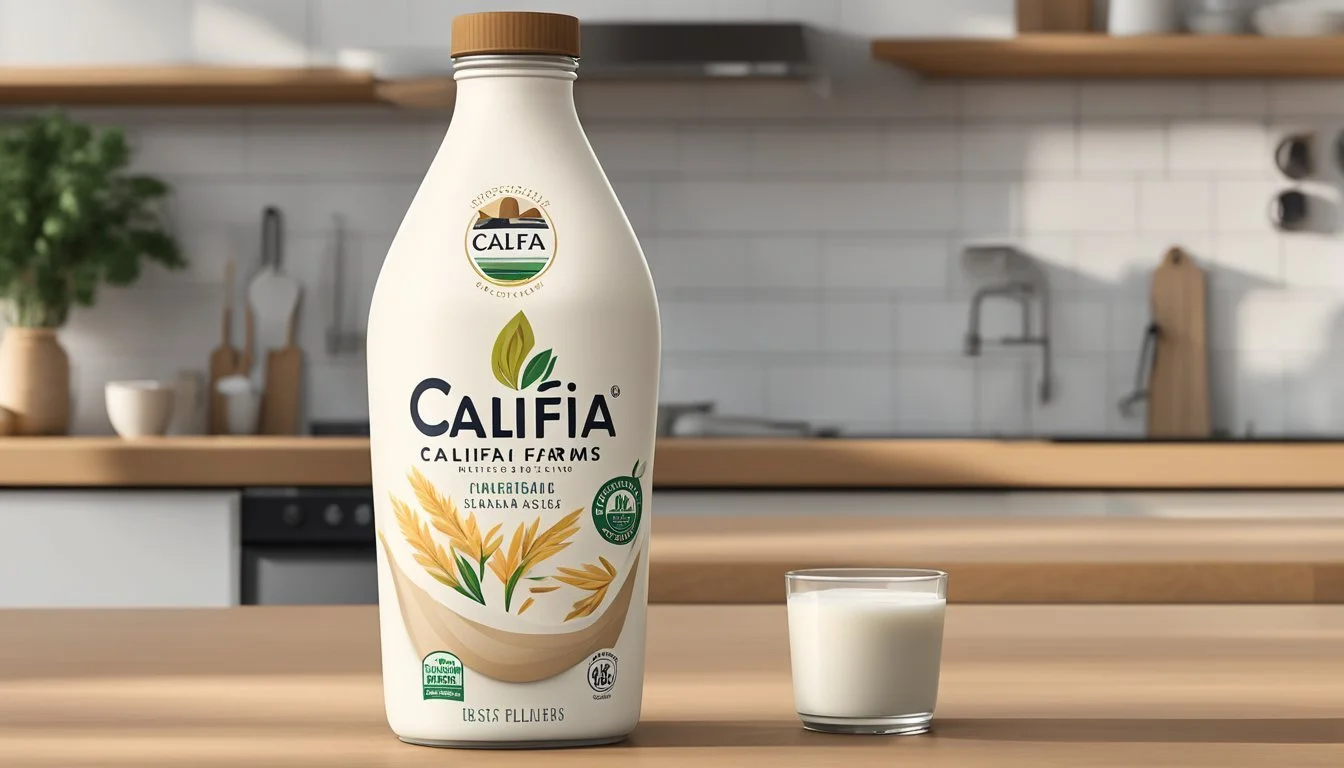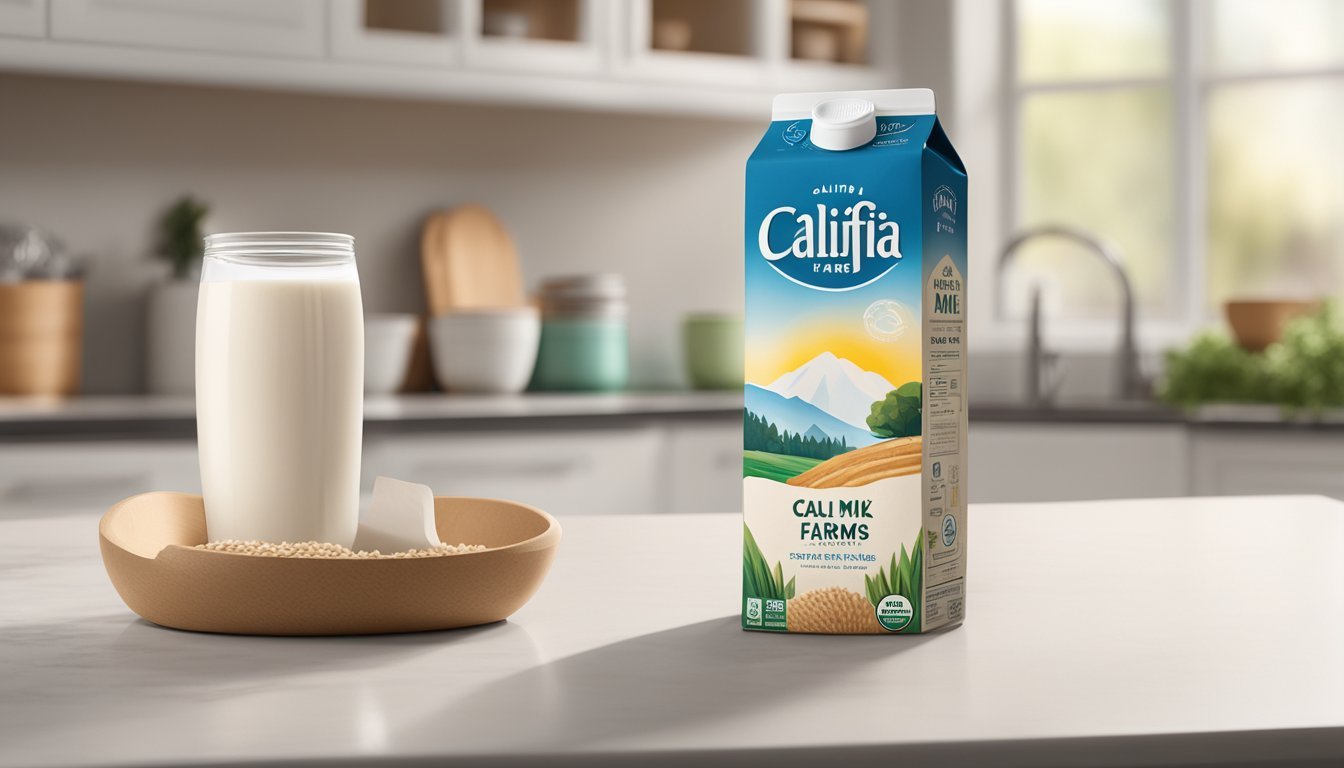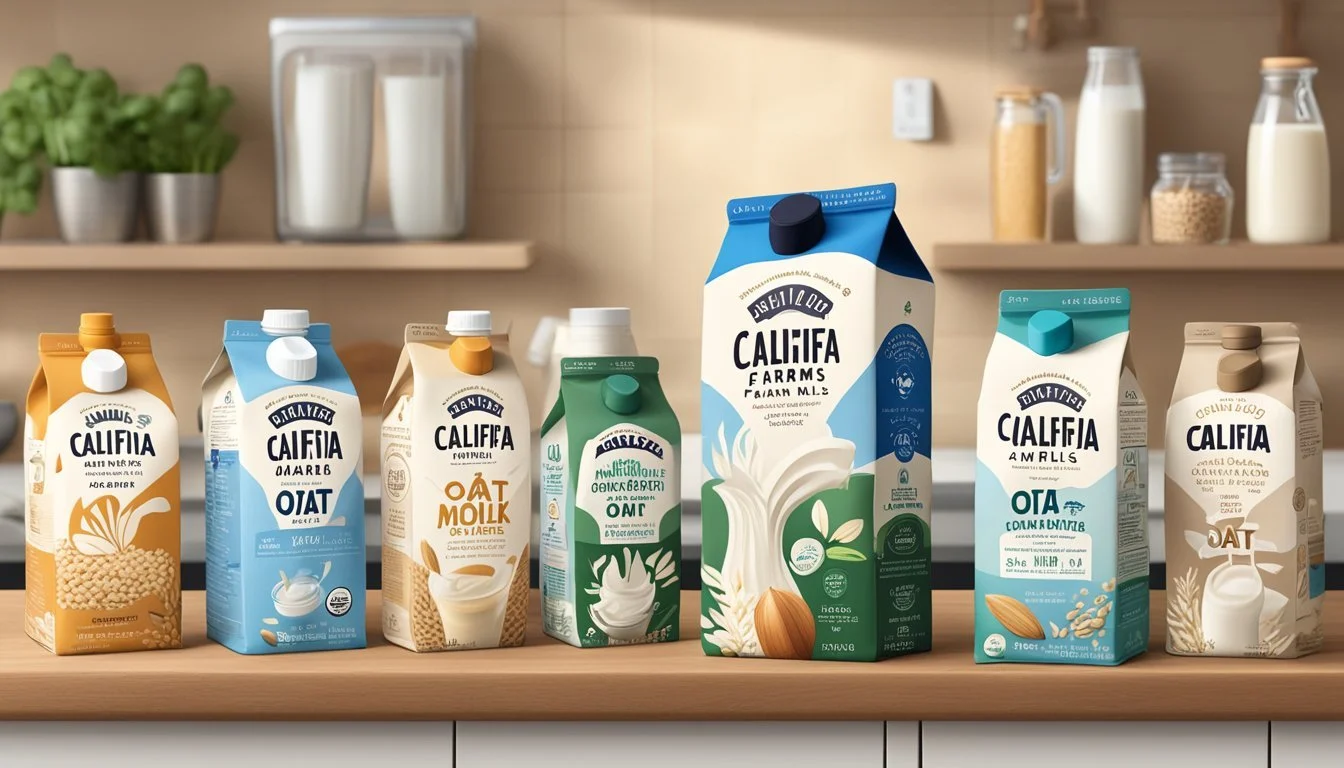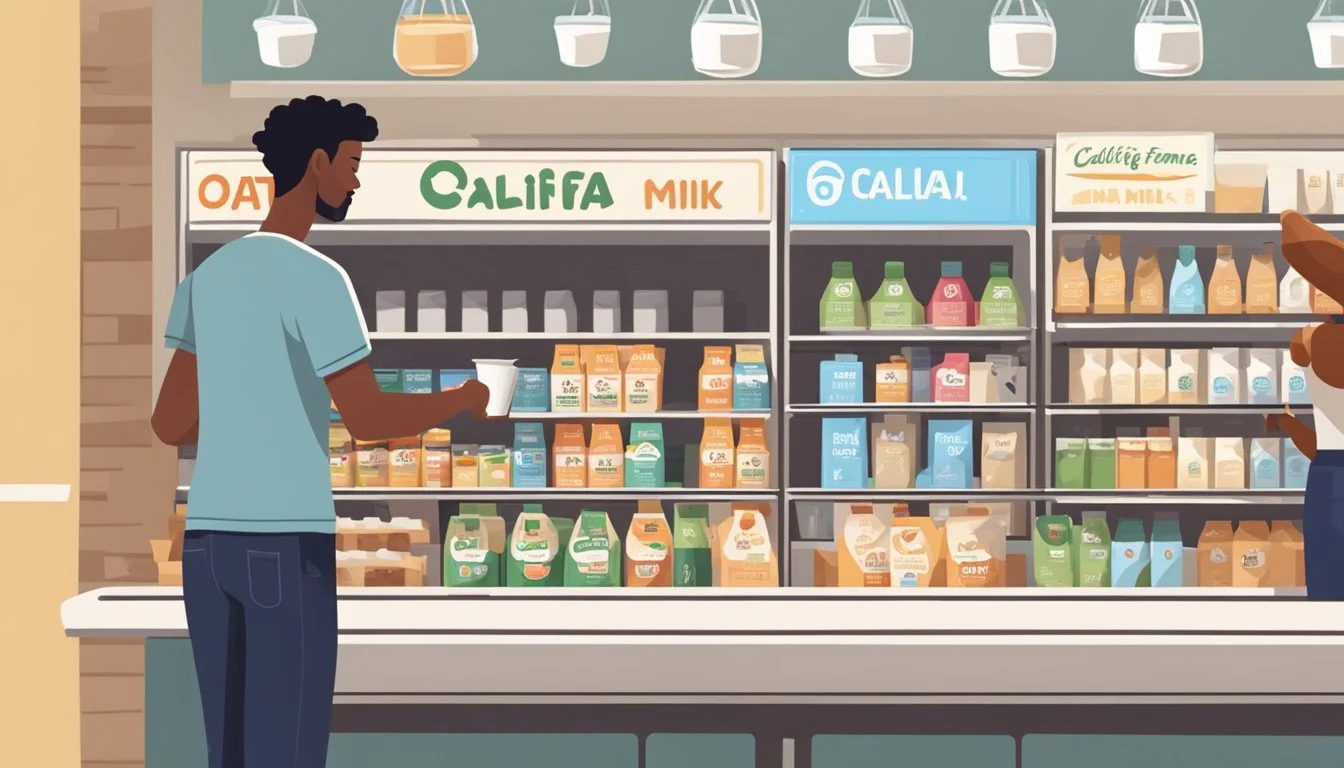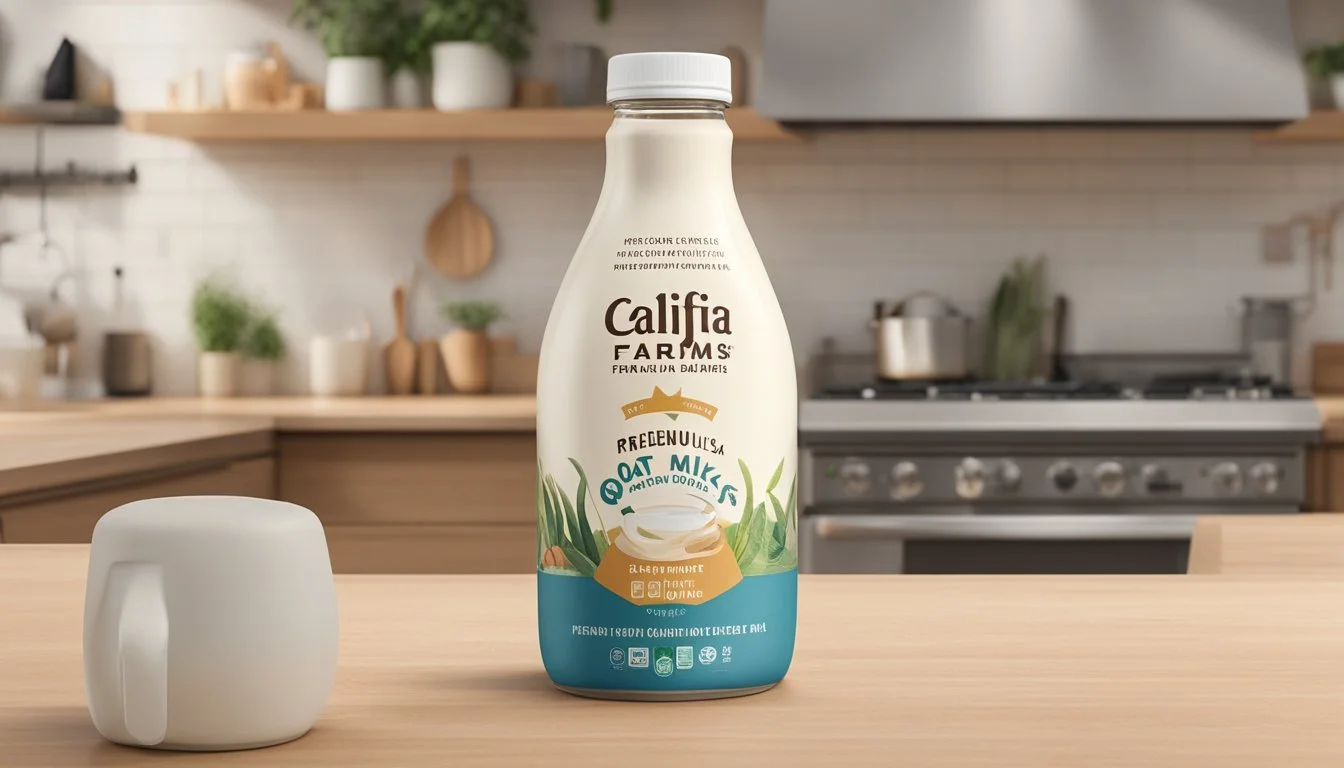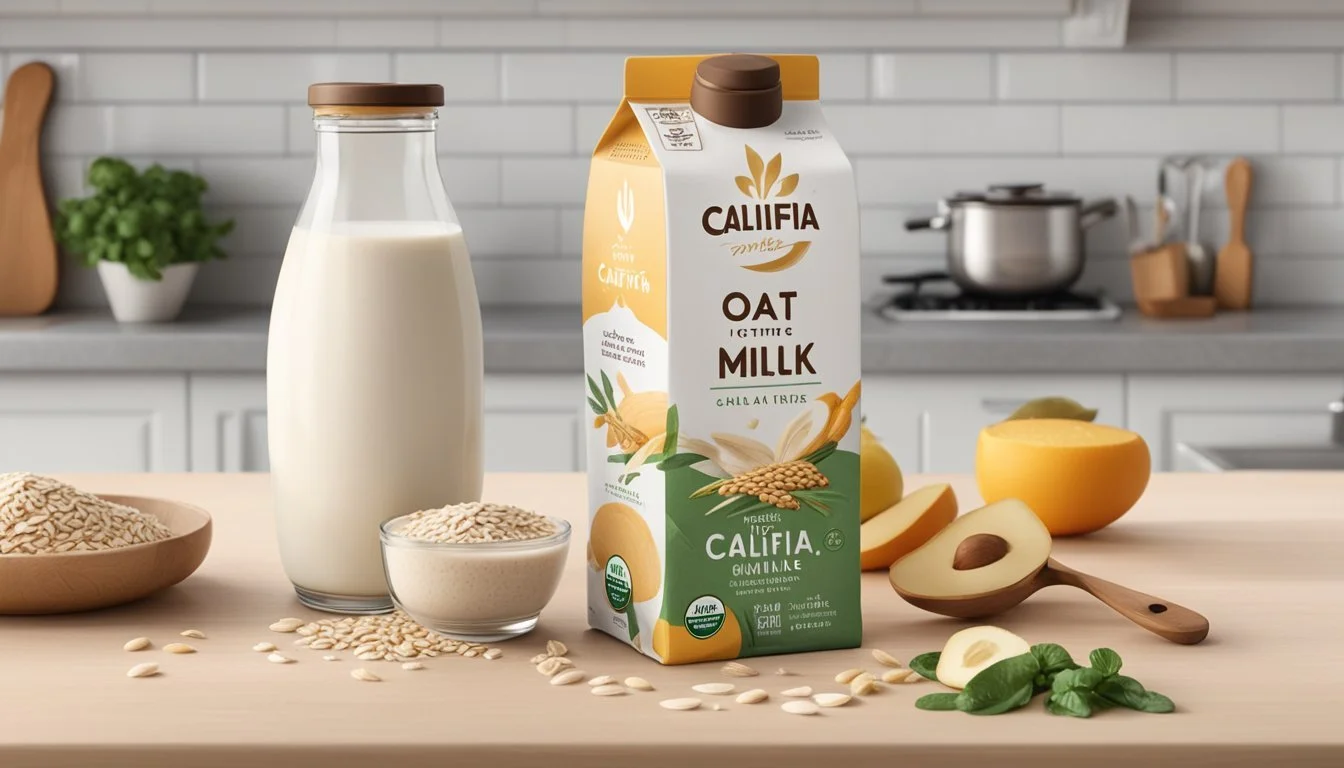How Long Does Califia Farms Oat Milk Last?
Shelf Life and Storage Tips
When it comes to plant-based milk alternatives, shelf life is a crucial factor for consumers to consider. Califia Farms oat milk, a popular choice among dairy-free milks, offers a specific window for consumption once opened. According to the brand, their oat milk should be kept refrigerated and is recommended to be consumed within 7 to 10 days after opening. This time frame ensures that consumers enjoy the product at its freshest and most flavorful.
In the context of unopened shelf-stable Califia Farms oat milk, its longevity is significantly extended, with the product typically lasting between six months to a year when stored properly. It is important, however, to check the expiration date on the packaging for the most accurate information regarding its shelf life. The processing method used to make the oat milk shelf-stable allows for this extended unopened shelf life by keeping the milk in a sterile environment free from contaminants that could cause spoilage.
Understanding Oat Milk
Oat milk is a popular dairy-free, vegan-friendly milk alternative made primarily from oats and water, often enriched with vitamins and minerals. In this section, we delve into the composition of oat milk and provide insights into the Califia Farms brand which exemplifies a commitment to plant-based sustainability and quality.
Composition of Oat Milk
Oat milk is created by blending water and oats, then straining the mixture to create a smooth liquid. The core ingredients typically include:
Oats: The base grain for oat milk, providing carbohydrates and fiber.
Water: Used to blend with oats for the right consistency.
Vitamins: Often fortified with vitamins such as D, A, and B12.
Sunflower oil: Provides a source of fat for creamier texture.
Gums and stabilizers: Such as gellan gum or xanthan gum, included to improve texture and shelf-life.
Preservatives: Sometimes used to maintain freshness.
Manufacturers may add other ingredients such as calcium, phosphate, dipotassium phosphate, sea salt, and natural flavors. Califia Farms oat milk generally avoids added sugars, making it a healthier choice for those monitoring sugar intake.
Califia Farms Brand Overview
Califia Farms has established itself as a leader in the plant-based beverage industry. Their oat milk product is:
Dairy-free: Suitable for lactose-intolerant individuals.
Vegan: Contains no animal products or by-products.
Gluten-free: Safe for people with gluten sensitivities, although cross-contamination can be a concernfor those with celiac disease, depending on the production facility.
Califia Farms differentiates itself with sustainability initiatives that emphasize collaboration with suppliers for a stable and certain operation. They focus on maintaining long-term, sustainable relationships with their suppliers, reflecting their commitment to environmental stewardship and responsible sourcing.
Shelf Life Fundamentals
Understanding the shelf life of Califia Farms oat milk is crucial for maintaining its freshness and ensuring quality consumption. This section explores how different storage conditions impact the product's durability, from unopened shelf-stable cartons to refrigerated bottles once they've been opened.
Shelf-Stable vs. Refrigerated Varieties
Shelf-Stable Varieties: These are processed in an aseptic environment and can be stored in a pantry or any cool and dry place before opening. Refrigerated Varieties: These are generally found in the fridge section and should remain refrigerated even while unopened.
Unopened Oat Milk Shelf Life
Unopened Califia Farms oat milk typically has a nine-month shelf life when stored properly. It is essential to store these cartons in a cool, dark, and dry area, away from direct sunlight or heat sources.
Opened Oat Milk Shelf Life
Once the seal is broken, opened Califia Farms oat milk should be kept in the fridge and it's recommended to consume it within 7-10 days. An opened container should be stored airtight to maintain quality and prevent spoilage.
Expiration Date Significance
The "Best By" or expiration date on Califia Farms oat milk indicates the peak period for the product's quality. Although it may last 7-10 days past this point when unopened, it is advisable to adhere to the labeled date to ensure optimal freshness.
Safe Storage Practices
Maintaining the quality and longevity of Califia Farms oat milk hinges on proper storage methods, which guard against spoilage and preserve freshness.
Optimal Storage Conditions
To ensure maximum shelf life, Califia Farms oat milk should be stored in a cool, dry area away from direct sunlight. Before opening, shelf-stable varieties can be kept in a pantry or cupboard, while refrigerated types must be stored in the fridge.
Shelf Stable: Pantry or cupboard (avoid heat and light)
Refrigerated Cartons: Always in the refrigerator
Refrigeration Requirements
Once opened, Califia Farms oat milk must be refrigerated immediately. The optimal temperature for storage is between 35°F and 40°F to prevent contamination and oxidation. Refrigerated oat milk should be used within 7-10 days after opening.
Refrigeration: 35°F to 40°F
Usage: Within 7-10 days post-opening
Signs of Improper Storage
Signs of improper storage may include off-smells, changes in color, or visible signs of mold. These could indicate that the milk has been exposed to fluctuations in temperature, moisture, or has been left out of the refrigerator for prolonged periods.
Off-smell: Indicator of spoilage
Color change or mold: Sign of contamination
Properly sealing the container, whether with an airtight lid or a securely closed spout, is critical after every use to maintain the freshness and quality of the oat milk.
Determining Quality and Freshness
When assessing Califia Farms oat milk, one can determine the quality and freshness by examining its visual and textural characteristics, and by evaluating its smell and taste.
Visual and Textural Indicators
The visual and textural examination of Califia Farms oat milk helps in assessing its freshness and determining if it has spoiled. Fresh oat milk should have a consistent, smooth texture without any lumps. If the milk displays separation or clumping, it can indicate spoilage. Visual signs of mold or discoloration also suggest that the product is no longer suitable for consumption. The appearance should be uniform throughout, without any curdling or sediment at the bottom of the container. Any change in its typical creamy, beige color to a darker shade might signal that the milk is going rancid.
Olfactory and Taste Assessments
The smell and taste of oat milk are reliable indicators of its quality and freshness. Califia Farms oat milk, when fresh, has a mild, slightly sweet, and pleasant aroma. Any sour or off-putting smell can signal the presence of spoilage bacteria, possibly leading to food poisoning if consumed. Tasting the product should only follow a successful visual inspection. Fresh oat milk should taste clean and creamy with a hint of oat flavor. A rancid or bitter taste signifies that the oat milk is no longer fresh and should not be consumed.
Post-Expiration Consumption
When Califia Farms oat milk surpasses its expiration date, the post-expiration consumption is a concern that requires careful consideration emphasizing safety and awareness of potential health risks.
Assessing Post-Expiration Safety
Expiration Date: It's imperative to understand that an expiration date on Califia Farms oat milk serves as a benchmark for optimal freshness and quality, rather than an exact point at which the product becomes harmful. After this date has passed, one should assess the oat milk's safety based on a few indicators. These indicators include smell, color, and texture. A sour smell, discoloration, or a separation that doesn't resolve with shaking may all imply that the oat milk has deteriorated and should not be consumed.
Smell: Should be similar to its original mild, slightly sweet scent.
Color: A consistent, creamy light brown without any signs of mold or unexpected hue changes.
Texture: Should remain smooth; it should not have considerable separation or curdling.
Risks of Consuming Expired Oat Milk
Food Poisoning: Consuming any expired product, including Califia Farms oat milk, is risky due to the potential development of bacteria that can lead to food poisoning. Although Califia Farms oat milk is plant-based and may contain fewer perishable components than dairy milk, bacteria such as salmonella or E. coli could still present after prolonged periods post-expiration, particularly if storage conditions have been suboptimal.
Quality and Taste: Aside from safety, the taste and quality of the oat milk may degrade after the expiration date. It may become rancid, developing an off-putting taste that is unpalatable. However, slight changes in taste or quality do not automatically imply that the oat milk will induce food poisoning but should be taken as a sign that the product is past its prime for consumption.
In summary, one should err on the side of caution and prioritize health over the possible waste associated with discarding expired oat milk.
Usage in Cooking and Beverages
Oat milk's versatility extends to various culinary applications, offering a dairy-free alternative that complements the flavors of both hot beverages and cooked dishes.
Using Oat Milk in Coffee
Oat milk has become a favored milk alternative for coffee enthusiasts and baristas. Its creamy consistency and subtle sweetness enhance the coffee experience without overpowering its natural flavors. The barista blend of Califia Farms oat milk is specifically crafted to achieve a silky foam, making it ideal for lattes and cappuccinos.
Flavor compatibility: Harmonizes with the rich notes of coffee.
Foaming quality: Produces a stable, airy foam for specialty drinks.
Oat Milk in Dairy-Free Recipes
When it comes to baking and cooking, oat milk can substitute dairy milk on a one-to-one basis. Its mild flavor and natural sweetness make it suitable for both sweet and savory recipes. The organic oat milk by Califia Farms, with no additives, ensures that the authentic taste of the baked goods or dishes isn't compromised.
Baking: Ideal for cakes, muffins, and bread for moisture and tenderness.
Cooking: Can be used in sauces, soups, and other recipes requiring milk.
Using oat milk as a dairy-free ingredient in the kitchen can offer not only a similar texture and taste to traditional milk but also cater to those looking for plant-based alternatives.
Homemade Oat Milk Considerations
When making oat milk at home, the preparation process and storage guidelines are critical. Preservatives are not typically used in homemade oat milk, which means a shorter shelf life than commercially produced versions.
Recipe and Preparation
The recipe for homemade oat milk usually involves blending oats with water and then straining the mixture to separate the liquid from any solids. Precision in measurement is important for consistency and taste. For certified organic oat milk, one should ensure that the oats used are organic. The preparation area should be clean, and utensils must be sterilized, as the absence of preservatives can make homemade oat milk more susceptible to bacterial growth.
Ingredients:
Oats: Use organic if preferred for certified organic oat milk,
Water: Clean, preferably filtered water.
Blend the oats and water until smooth.
Strain the mixture using a cheesecloth or a fine-mesh strainer to remove solids.
Shelf Life of Homemade Oat Milk
Homemade oat milk's shelf life is significantly shorter than its commercial counterparts. In general, once prepared, it should be stored in a sealed container in the refrigerator. Homemade oat milk can last between 3-5 days when kept refrigerated. Signs of spoilage include a sour smell, a change in texture, or discoloration. Freshness is paramount, and one should only prepare what can be consumed within this time frame to maintain quality.
Storage Tips:
Container: Use a glass bottle or jar with a tight-fitting seal to preserve freshness.
Temperature: Always keep homemade oat milk refrigerated.
Remember, a tight seal is imperative to prevent contamination and prolong the shelf life of your homemade oat milk.
Alternative Milk Options
When exploring milk alternatives, one should consider various factors including nutritional value and applicability in different contexts such as culinary or dietary requirements.
Oat Milk vs. Other Plant-Based Milks
Oat milk has become a popular plant-based milk substitute, prized for its creamy texture and eco-friendly profile. As a dairy-free beverage, oat milk stands alongside alternatives like almond milk, soy milk, and rice milk. Each type of plant-based milk has its unique nutritional benefits and uses.
Oat Milk: It typically contains more fiber than other plant-based milks and is often enriched with vitamins and minerals such as calcium and Vitamin D. Oat milk is also well-received for its environmental sustainability, as oats require less water to grow compared to almonds.
Almond Milk: Known for its low calorie and low fat content, almond milk is a great option for those looking to reduce their caloric intake. However, the environmental impact of almonds is a consideration due to the significant amount of water needed for almond tree cultivation.
Soy Milk: Soy milk offers a high-protein alternative that closely matches dairy in nutritional content. It is also a good source of potassium and can be fortified with other nutrients.
Rice Milk: Rice milk is the most hypoallergenic of the plant-based milk options, making it suitable for individuals with allergies to soy, nuts, or gluten. However, it tends to be lower in protein and higher in carbohydrates.
Comparison to Traditional Dairy Milk
Plant-based milks offer an alternative for those seeking dairy-free options due to lactose intolerance, dietary restrictions, ethical considerations, or taste preference.
Nutritional Value: While dairy milk naturally contains high levels of calcium, protein, and Vitamin B12, plant-based milks often require fortification to reach similar nutritional profiles. Most milk alternatives provide a varying range of vitamins, minerals, and are often lower in cholesterol compared to traditional dairy milk.
Training & Guidelines: For individuals undergoing training or adhering to specific dietary guidelines, plant-based milks can serve as an appropriate substitute. One should select an alternative that aligns with their nutritional needs. For example, athletes may prefer soy milk for its higher protein content, while someone seeking a low-fat option may opt for almond milk.
Culinary Use: In terms of culinary use, some milk alternatives may behave differently than dairy milk in recipes due to their unique consistencies and flavors. Oat milk is particularly versatile, providing a creamy texture that works well in coffee, baking, and cooking.
In summary, each plant-based milk offers distinct advantages and may suit different preferences or dietary requirements. Consumers can choose based on taste, nutritional needs, or environmental impact.
Buying and Selling Oat Milk
When purchasing Califia Farms Oat Milk, consumers should consider retail availability and online purchasing options. The product's shelf life and required storage conditions are integral.
Retail Availability
Califia Farms Oat Milk can be commonly found in grocers and supermarkets across the United States. Customers have two primary options:
Shelf-stable Oat Milk: This version is not refrigerated when sold and can be stored in a cool, dry place until opened.
Refrigerated Oat Milk: Found in the refrigerated dairy section and should remain cold from purchase to consumption.
It's essential to check the "best by" date to ensure maximum freshness.
Online Purchase Considerations
When buying Califia Farms Oat Milk online, consider the following:
Vendors: Major platforms like Amazon offer Califia Oat Milk, often with the option for bulk purchases.
Shelf Life and Storage: Both shelf-stable and refrigerated variants are available online, though storage instructions post-delivery will mirror retail conditions.
Sustainability Initiatives: Califia Farms competes with brands like Oatly in sustainability; look for those with clear initiatives, often listed in product descriptions or certifications.
Health and Nutrition
Califia Farms oat milk delivers essential nutrients and offers dietary options for various lifestyles. It's a vegan, plant-based alternative to dairy milk that emphasizes health and nutrition.
Nutritional Benefits
Califia Farms oat milk is a notable source of nutrition, offering a plant-based alternative that often integrates vitamins like calcium and Vitamin D. Specifically, some varieties such as the Original Protein Oat provide 8 grams of plant-based protein per serving. This protein content supports muscle development and repair. Additionally, Califia Farms' oat milk includes dietary fiber and is naturally free from cholesterol, which can be beneficial for heart health.
Nutrients Amount Calories Varied Protein Up to 8g Dietary Fiber Present Added Sugar 0g in unsweetened varieties Vitamin D Present Calcium Present
Dietary Considerations
Califia Farms oat milk caters to several dietary needs. It is inherently dairy free, making it suitable for those who are lactose intolerant or have a preference for non-dairy alternatives. Their oat milk is also gluten free, which is important for individuals with celiac disease or gluten sensitivities. For those monitoring their sugar intake, unsweetened varieties do not contain added sugars, and the use of whole rolled oats underlines the commitment to minimal processing. The production process accounts for sustainability, with some products being organic and GMO free, ensuring that it aligns with eco-conscious dietary preferences.
Environmental Impact and Sustainability
Califia Farms is committed to sustainability, with a focus on reducing the environmental impact of its products. The plant-based nature of their oat milk already reflects a more sustainable alternative to dairy, but their initiatives do not stop there.
Packaging and Carbon Footprint
Materials: Califia Farms has made strides to reduce the carbon footprint of its packaging by utilizing 100% recycled PET (rPET) bottles for some products.
Scope 3 Emissions: The company reports that packaging contributes to 33% of its scope 3 emissions, prompting initiatives to minimize this impact.
Califia Farms Eco Initiatives
Water Usage: By producing oat and almond milks, Califia Farms leverages the lower water requirements of these plants compared to dairy farming, thus enhancing the sustainability of their products.
GHG Emissions: Plant-based milks like the ones produced by Califia Farms are associated with fewer greenhouse gas emissions. The company continues to explore methods to reduce its environmental impact, evidenced by its sustainability report and efforts to improve packaging.
Frequently Asked Questions
This section addresses common concerns regarding the proper storage and shelf life of Califia Farms Oat Milk as well as its versatility in various culinary applications.
Storage and Expiration Queries
When consumers purchase Califia Farms Oat Milk, understanding the correct storage practices is essential for maintaining its quality. Unopened oat milk can last up to two months when stored in a cool and dry place, away from direct sunlight. Once the container is opened, it must be refrigerated and is best used within 7-10 days.
Refrigerator Storage: Keep the oat milk in the fridge at all times after opening.
Shelf Life:
Unopened: Up to 2 months.
Opened: 7-10 days in the refrigerator.
It is crucial to note that oat milk's shelf life can be compromised if not stored at the right temperature. One should always check for signs of spoilage such as an off smell or color change to determine if the oat milk has gone bad.
Usage in Diet and Recipes
Califia Farms Oat Milk is not only a dairy-free beverage but also an ingredient one can confidently incorporate into their diet and recipes. Due to its creamy texture, it works well in coffee, making it a popular choice for both baristas and homebrewers. Moreover, its stability under heat makes it suitable for cooking and baking.
Dietary Inclusion: Excellent dairy-free alternative for lactose-intolerant individuals.
Culinary Uses:
Coffee: Adds a creamy texture.
Cooking and Baking: Heat-stable and versatile.
Oat milk can elevate the taste and consistency of various recipes, making it a valuable addition to one's kitchen pantry. Whether used in a morning latte or as a substitute in baked goods, Califia Farms Oat Milk maintains its integrity and contributes to the richness in flavor.
Conclusion
Califia Farms oat milk is a popular plant-based milk alternative that offers both refrigerated and shelf-stable products. Unopened, the shelf-stable oat milk can last between six months to a year, although some users report it can last up to 18 months if it remains unopened and stored properly. Once opened, however, the product's shelf life diminishes to about 7-10 days and it must be kept refrigerated.
To ensure freshness, consumers should store the oat milk in a cool, dark place prior to opening. After opening, refrigeration is crucial to maintain its quality and prevent spoilage. Signs that Califia Farms oat milk has gone bad include:
Smell: An off or sour odor is a clear indicator that the milk should not be consumed.
Taste: If the taste is no longer neutral or slightly sweet and instead has a bitter or sour note, it has spoiled.
Consistency: Separation can occur but should resolve with a shake; any chunkiness indicates spoilage.
Color: A deviation from its typical light brown or cream color can signify contamination.
Consumers are advised to follow use-by dates and to perform a quick assessment of these characteristics to determine the milk's condition before consumption. It's important to handle Califia Farms oat milk correctly for the best experience.

